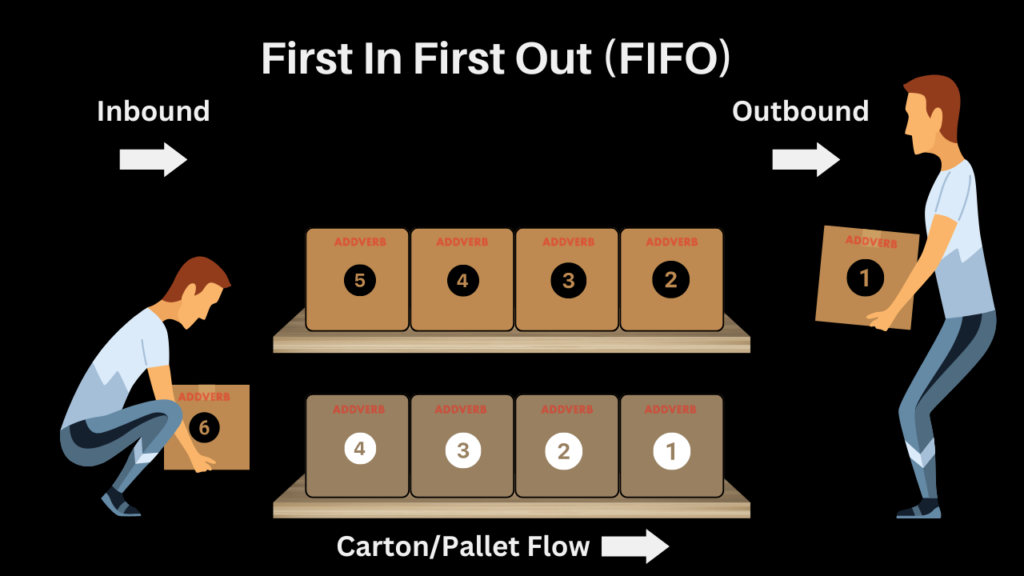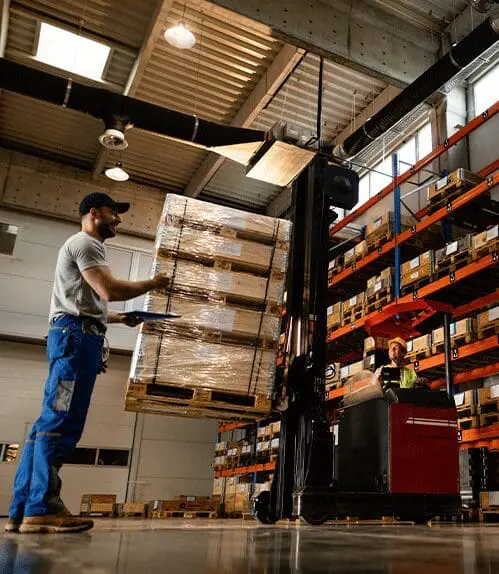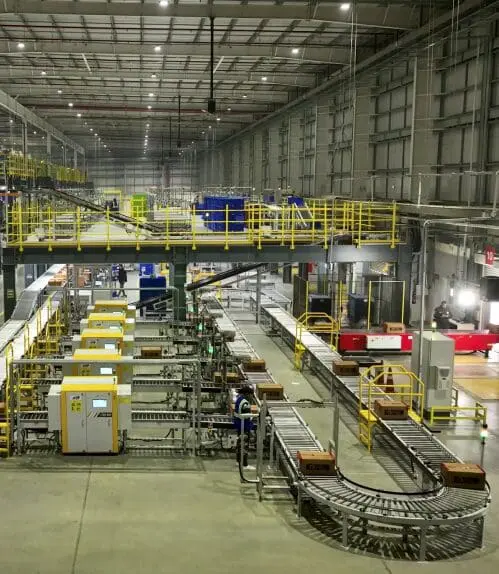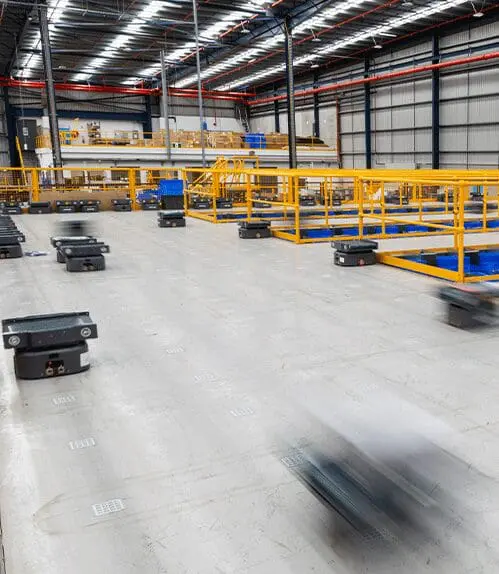Table of Contents
The way you assess your inventory can have a big impact on your profits. FIFO and LIFO are two common methods for this. Join us in this blog as we explain FIFO and why it’s a popular choice for many businesses.
____________________________________________________________________________
“FIFO isn’t just a method; it’s a promise to your customers that you’ll always deliver quality and value.”
____________________________________________________________________________
Effective logistics can help companies gain an edge over their competitors. It’s all about ensuring that your products are in the right place at the right time, so your company is the one customers can trust. Warehouses may not be perceived as the most glamorous places, but warehouse management and the way stock moves through your warehouse are the backbone of effective logistics.
Inventory is one of the biggest assets a business has. Thus, it is important to manage it in a way that reduces waste and increases profit. One such useful inventory management method is First In, First Out (FIFO). The system is based on the principle that the oldest product in stock is the first one to be sold. Let’s take a deep dive into how FIFO functions and how it can be used in your own business.
What is FIFO ?
First-In, First-Out (FIFO), is a common method for inventory management used by businesses to manage their stock. As mentioned above, the products or assets that were acquired or produced first are used or sold first. This process is commonly used in industries where products have limited shelf life, such as the food and beverage industry, to ensure that the oldest items are sold or used before they reach their expiration. The same principle can be followed for the first expired, first out, using the receipt date instead of the expiration date.
However, FIFO can be used in any industry where demand for the product or prices may fluctuate. By making sure that the older inventory is sold first, FIFO can help avoid having too many products lying in inventory that could eventually decrease in value or become obsolete.
How the FIFO Method Works?
In the FIFO warehouse, newly acquired items are placed at the back of the inventory, and the oldest items are chosen from the front for sale or use, ensuring the priority of older items to prevent losses due to expiration or price fluctuations.

To implement the FIFO method for inventory tracking, companies need to meticulously record entry and exit dates for each item. While smaller businesses might manage this manually, most warehouses now rely on warehouse management systems (WMS) or inventory management software (IMS) to facilitate this process. Real-time recording, particularly upon receipt, is crucial for accurate tracking.
What makes First In, First Out the Finest Inventory Management Technique
FIFO (First In, First Out) is important because it guarantees that older inventory is consumed or sold before newer inventory is used, therefore reducing any waste, spoilage, and obsolescence. FIFO is especially important for perishable goods – such as food and pharmaceuticals – that have a limited shelf life.
FIFO minimises losses due to price increases by selling lower cost inventory first. In summary, FIFO increases inventory turnover, resulting in better cash flow, fresher products for customers, and more accurate reporting of costs; it increases efficiency and creates a profit.
Using the FIFO method provides various benefits to businesses:
1. Reduces Inventory Waste, Costs, and Spoilage
The FIFO system is crucial for managing inventory, giving priority to selling or using the oldest products. It helps prevent wastage and spoilage, especially in industries like food and beverages, apparel, electronics, cosmetics, and more. Prioritising the use of older items ensures that customers receive fresh products, simultaneously protecting businesses from holding obsolete inventory and preserving their profitability.
2. Minimises Losses Due to Price Fluctuations
FIFO reduces price fluctuation losses. It ensures older, cheaper items are sold first, preventing businesses from selling newer, costlier items at a lower price. This safeguards against losses due to market changes or pricing decisions, preserving profitability.
3. Increases Profits
FIFO maximises profits by minimising the cost of goods sold (COGS). It assumes that the oldest items are used first, preventing businesses from passing on higher costs of newer products to customers. This results in significantly increased profits for businesses.
4. Better Forecasting of Customer Demands
FIFO helps in forecasting customer demand effectively. Tracking entry and exit dates for items allows businesses to identify what needs restocking to meet customer demand. This competitive edge ensures customers’ needs are consistently met. It’s essential to distinguish between sales and shipment demands when making decisions.
5. Enables Businesses to Promptly Respond to Shifts in Customer Demands
FIFO, through selling the oldest products first, empowers businesses to promptly adjust inventory levels to meet customer demand.
6. Improves the Precision of COGS and Inventory Valuation
Using the FIFO method helps in the precise calculation of COGS and inventory valuation. This is achieved by allocating the costs of the oldest items to COGS, rather than the more expensive newer items, resulting in accurate records and enhanced profitability for businesses.
| Key Takeaway The goal of the FIFO method is to reduce waste, boost profit through cost-efficient sales, and enhance demand forecasting for agile inventory management. |
FIFO Made Easy: How Addverb’s Pallet Shuttle Improves Warehouse Efficiency
Efficient warehousing is crucial in logistics and supply chain management. Automated Storage Retrieval Systems (ASRS system) enhance first-in-first-out (FIFO) warehousing by automating load handling, thus reducing manual work. They are invaluable for warehouses with exceptionally high load volumes, offering cost-effective space optimisation. AS/RS systems also facilitate data-driven warehouse layouts, enhancing overall efficiency.
Moreover, according to data from Insight Partners, the ASRS market is projected to expand significantly. It is expected to grow from US$ 2,724.27 million in 2022 to approximately US$ 4,681.40 million by 2028. This projection reflects a compound annual growth rate (CAGR) of around 7.0% during the period from 2022 to 2028. These statistics emphasize the growing importance of AS/RS technology in optimising warehouse operations, aligning well with the need for efficient inventory management techniques like FIFO.
With Addverb’s Pallet Shuttle – Cruiser, achieve optimal FIFO (First-In-First-Out) inventory management. This versatile solution ensures quick and efficient product rotation, making it perfect for perishable goods and fast-moving items. Read here to discover how pallet shuttles can enhance FIFO efficiency and improve warehouse performance.
The Cruiser pallet shuttle by Addverb improves FIFO inventory management with an automated product rotation that allows the oldest stock to always be used first. By ensuring timely product turnover, this automation reduces the chances of spoilage especially for the industries involved in dealing with perishable goods or fast-moving items, thus providing for timely product turnover.
The Pallet Shuttle integrates seamlessly with warehouse operations, optimizing space utilization and stock management. Removing manual intervention minimizes human error while increasing efficiency within the warehouse workings for bulk handling of inventory by FIFO principles. This ensures an operational flow that minimizes wastage and the overall performance of the warehouse.
OR
| Manage your FIFO Inventory with Addverb Click Here to Know More |
To Sum Up
When considering which inventory management system to use, it is crucial to take note of the type of items being stored, the effect on financial statements, and various other aspects. The FIFO method can be an impactful solution for warehouses storing perishable products with expiration dates or bulk quantities of non-perishable items without expiration dates.
FIFO, a popular method for tracking inventory costs in your accounting, can also apply to how products move through your warehouse or store. These two aspects work together to help you manage your inventory. What’s great about FIFO is its simplicity – it’s the primary method in many accounting software systems, making it easy to implement and use.

Founded in 2016, Addverb offers complete robotics solutions for warehouse and industrial automation, with a strong global presence through its subsidiaries worldwide. The company provides a range of in-house automation products, including Autonomous Mobile Robots, ASRS, and sorting technologies. It serves over 350+ clients, including well-known companies such as Coca-Cola, Amazon, and DHL.





